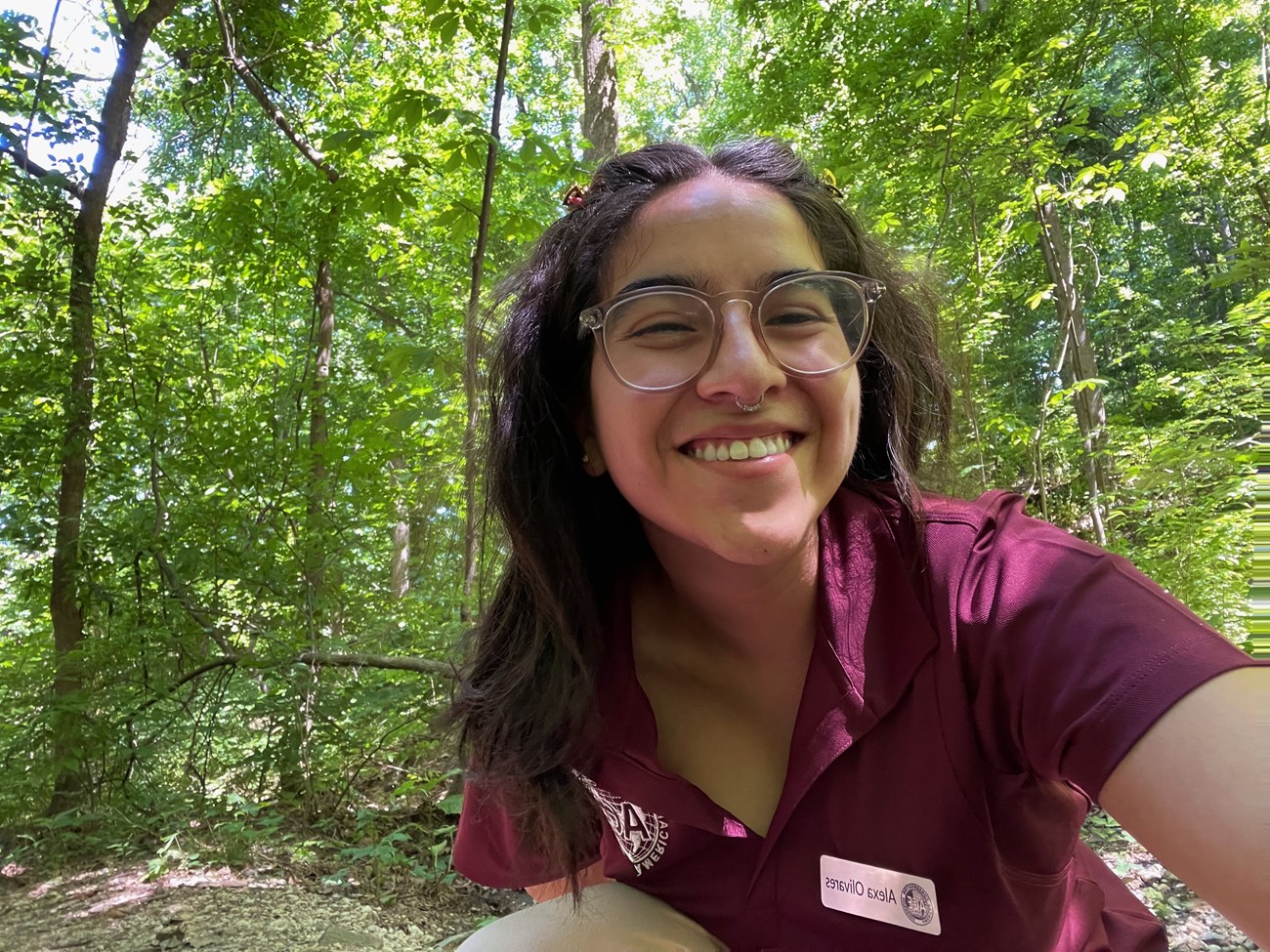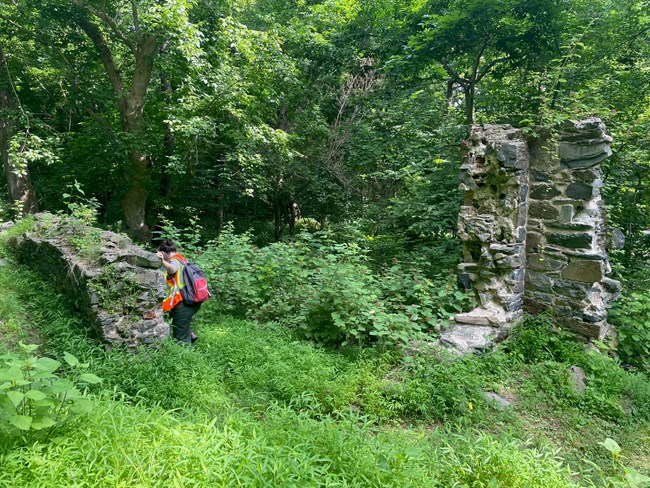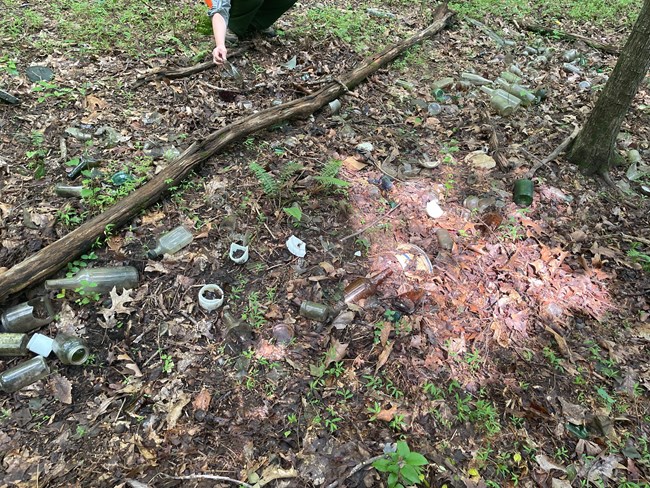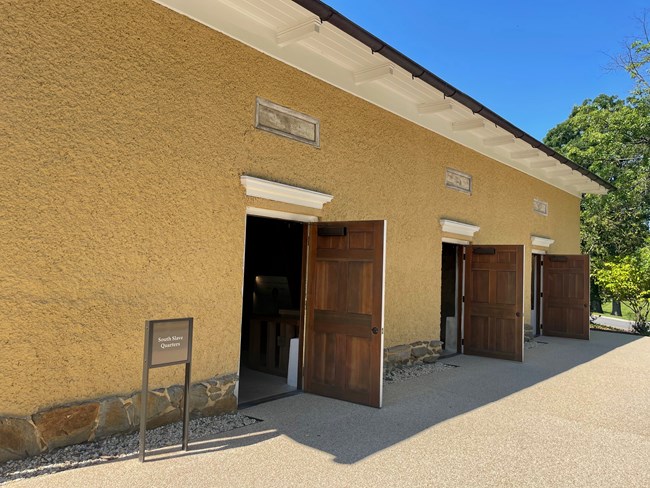Last updated: September 19, 2022
Article
Intern and Fellow Highlights: Alexa Kareliz Olivares

Courtesy of Alexa Olivares
You may have heard of cultural resources, but what exactly does this work entail and what type of work do interns and fellows do? Find out through this intern and fellow highlight series that features the work of our interns and fellows service wide.
Everyone has a personal connection to cultural resources. Cultural resources help us define what makes us human through understanding the evidence we leave behind and continue to create today. This can include anything from archives, archaeological sites, museum collections, structures and cultural landscapes, and resources with significance to a group of people traditionally associated with them.
To learn more about cultural resources, visit the Cultural Resources, Partnerships, and Science Directorate page.
So... What exactly does a cultural resource internship look like?
Interns and fellows work with multiple offices, programs, and parks through partner organizations such as the American Conservation Experience (ACE) and National Council for Preservation Education (NCPE). They work on various projects that range from tribal consultation and policy to telling the stories of women in World War II and even to connecting local communities with public history.
Their work adds value to the National Park Service and supports our mission to preserve for the enjoyment, education, and inspiration of this and future generations.
Meet Alexa Kareliz Olivares (they/them) who is the American Conservation Experience (ACE) Cultural Resources Diversity Intern at the George Washington Memorial Parkway.
Tell us a little bit about yourself?
I am a first generation Queer Latinx American. I am trained in Anthropology/Archaeology. I recently graduated with a Masters in the Social Sciences from the University of Chicago. My scholarly work focuses on the intersections between social activism, public history/interpretation and cultural resource management. My interests began during undergraduate studies at St. Mary's College of Maryland where I had the opportunity to work closely with descendant African American and Indigenous communities. This work was done as part of my undergraduate thesis, an effort/examination towards decolonizing/Indigenizing the archaeological practices and methodology at Historic St. Mary's City Museum (SMCM). My work also aligned with the commemoration for the lives of the enslaved people in St. Mary's County done by SMCM. I carry these experiences with me as I continue my internship in the National Park Service, continuing dialogues with archaeologists and descendant groups, like those communities involved at Arlington House. In my spare time I hike, run with my two husky dogs, paint, and play guitar/piano.

Courtesy of Alexa Olivarez
Tell us a little bit about what you do in your position?
I serve in a split remote/in person format, primarily working from the George Washington Memorial Parkway headquarters at Turkey Run park in McLean, Virginia or my home office in Silver Spring, MD. I spend much of my time researching and preparing for archaeological site condition assessments, Cultural landscape inventories, and collections inventories of the Arlington House Southern Slave Quarters using Interior Collections Management System (ICMS) cataloguing software. All the work conducted is part of larger ongoing conversations surrounding park management, preserving cultural history, and amending gaps in conservation/preservation of archaeological features. Telework involves accessing NPS archaeological records, ICMS collections systems, and carefully noting GPS and Latitude/Longitude coordinates to effectively identify archaeological sites out in the field. In person a regular day involves either office work or in the field site condition assessments. For CLI and condition assessment days we hike all day searching for archaeological sites and recording if conservation/preservation or further inspection is required. We determine in the field whether a site is in good condition and continue on along the Parkway's many historic and prehistoric sites.

Courtesy of Alexa Olivares
If you met a younger version of yourself, what would you tell them about your current career trajectory?
I think my younger self would be proud to see I have found the perfect career to bridge all my interests. I get to be outdoors for most of the time, I am directly involved in the stewardship of our nation's National parks cultural history, and am at the forefront of social change within the field of archaeology. I am able to put my name on some of the most profoundly important work involving descendant groups and the turbulent, often horrific reality of the nation's past. To be involved is a privilege that is not lost on me, I hope only to continue seeing archaeologists and historians alike, celebrating and spotlighting marginalized voices and their histories.

Courtesy of Alexa Olivares
How do you see the field of cultural resources changing in the coming years?
Already in the past few years I have witnessed immense change towards positive improvements in the field of cultural resources. Recent conversations surrounding political and social activism have sparked discourse relating to historic monuments/figures with racist or otherwise problematic pasts. The momentum felt by Black Lives Matter movements and Land Back movements have inspired even more in depth analysis of how to convey and represent a more accurate and inclusive American history. Reckoning with this nation's troubled past is a topic of regular conversation, the decades long work of Black and/or Indigenous activism is finally being pushed to the forefront in discourse. Something must change and a start is opening dialogue with descendant groups who have long been erased and silenced in the historical record. Some of the efforts I have observed are shifting focus to enslaved populations rather than the oppressive landowners, increased Indigenous tribal consultations, and careful examination on the power of language. These important efforts all demonstrate a push to recognize the incredible resilience and trauma faced by those who have suffered throughout the creation of this nation. I deeply hope this is a continued effort and a more complete comprehensive history can be unveiled. In addition, I hope more young underrepresented students will feel the same pull towards cultural resources as it is one of the most direct ways to reconcile with the nation's past and future.
Where do you see yourself in the future?
I want to continue working in the field of Cultural Resource management, either with the National Park Service or through another organization. My goal is to carry the expertise I have to keep bringing discussions surrounding repatriation, reparations, and decolonization to the forefront of archaeological discourse. I am always aiming towards the inclusion and transfer of principal stewardship to underrepresented groups in the interpretation and presentation of our collective history and by extension, our futures as well.
For more information on CRPS internship programs contact Paloma Bolasny at e-mail us
For more information on youth and young adult programs and opportunities in the National Park Service, visit Youth Programs (U.S. National Park Service) (nps.gov)
